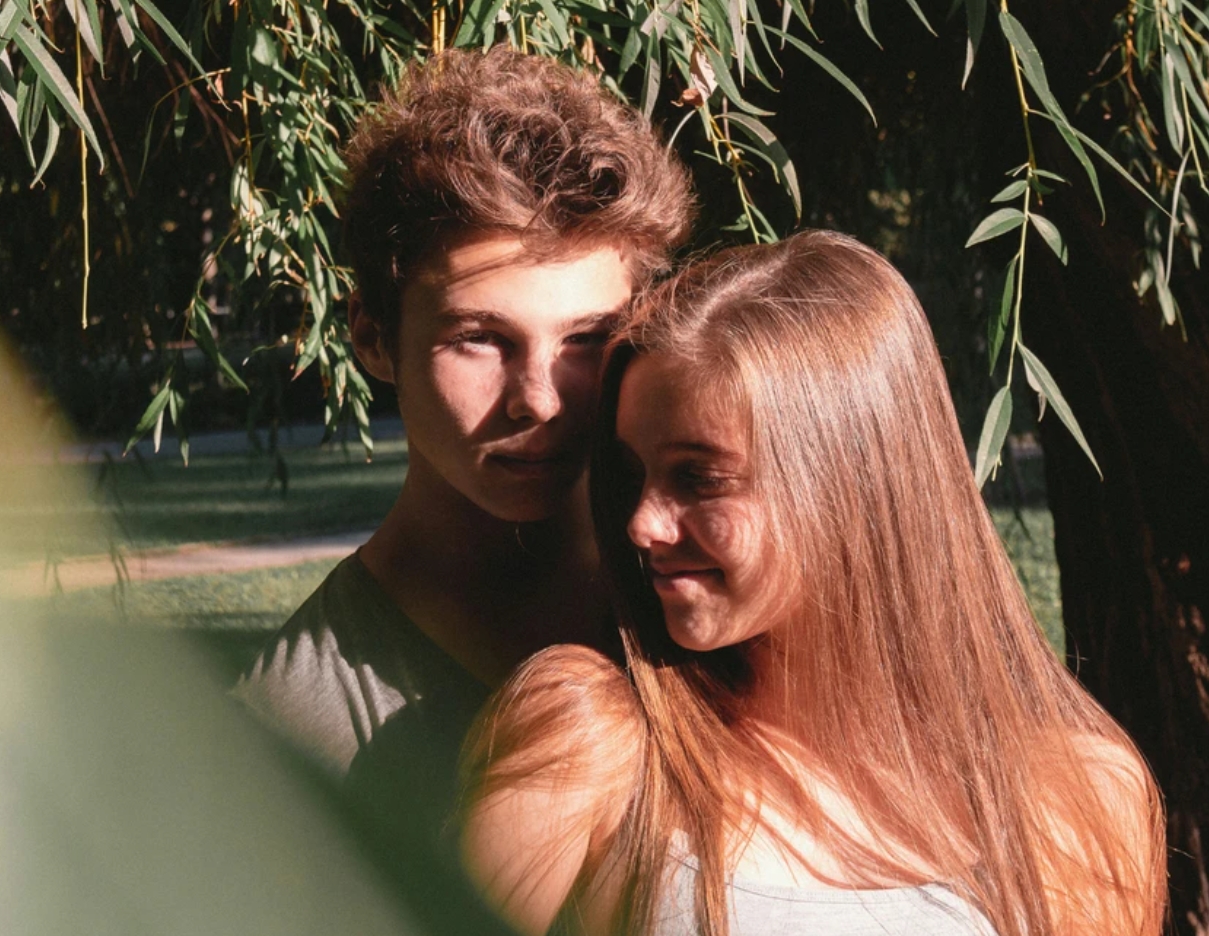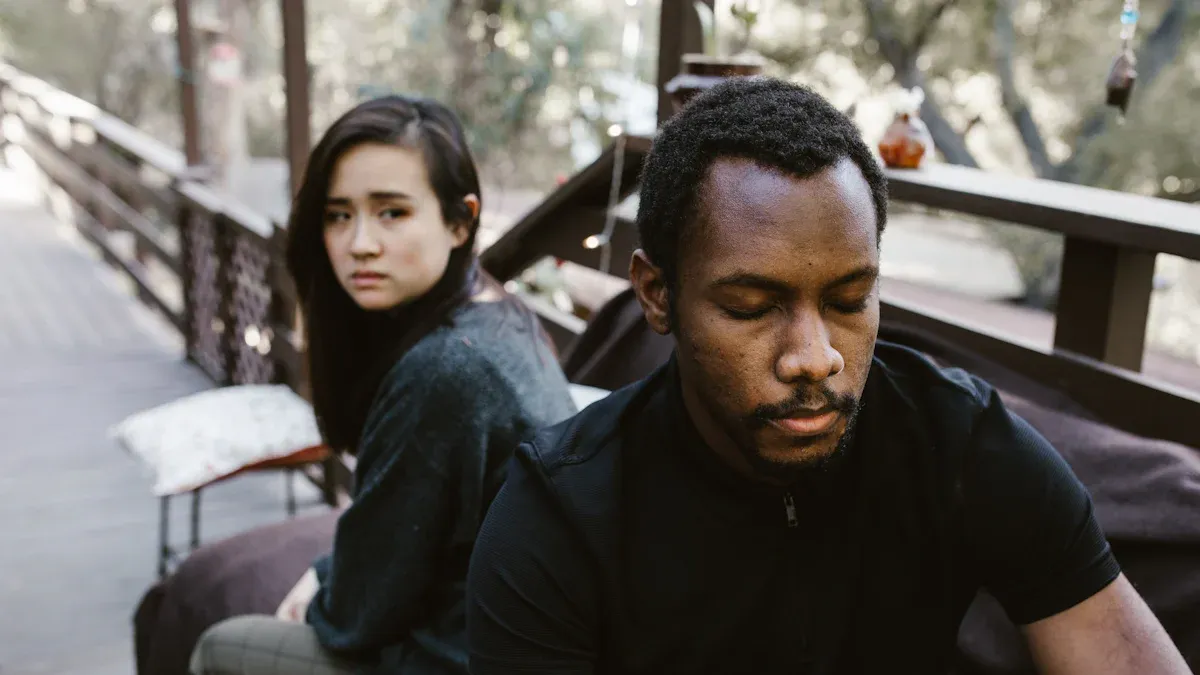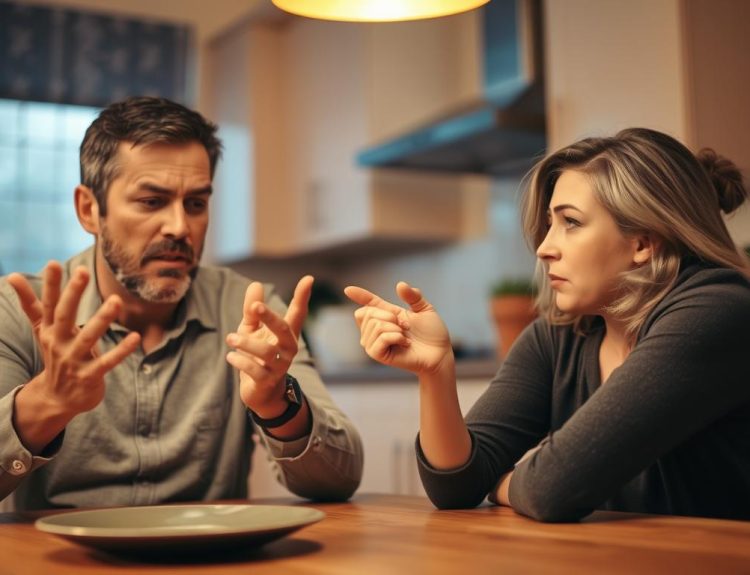Many people feel unsure or worried in their relationships. Anxious attachment is when someone wants to be close but is scared of being left out. This often starts when kids get mixed signals from their caregivers. People with anxious attachment look for signs that someone might leave them. They often ask their partners for more comfort. They can feel jealous or have a hard time trusting others. Learning about this can help people have better relationships.
Key Takeaways
Anxious attachment is when you worry about being left. You may also worry about not being loved in relationships. This often happens because caregivers gave mixed signals when you were a child.
People with anxious attachment have strong feelings. They want comfort all the time. They might act clingy or jealous to feel safe.
These feelings and actions can make relationships feel shaky. But learning about them helps build trust and closeness.
Anxious attachment can change as time goes on. Self-awareness, talking well, and help from therapy or loved ones can help.
Doing mindfulness, speaking clearly, and growing self-esteem helps people feel safer. These things help people have better relationships.
Anxious Attachment Overview
What It Means
Anxious attachment is when people feel unsure in relationships. They often worry others will leave or not care. This usually starts when caregivers act in ways that are hard to predict. Kids learn to feel nervous because comfort is not always there. These feelings can last into adulthood. People with anxious attachment may think they do not deserve love. They might also believe others cannot be trusted.
Some people think anxious attachment never changes. But studies show it can change over time. Attachment styles form from many relationships, not just with moms. Dads, grandparents, friends, and life events matter too. Attachment is not set forever. It can shift as people have new experiences and learn new ways to connect.
Attachment styles can look different in different cultures. In some places, like where family is very important, anxious attachment is more common. In other places, people value being on their own, so avoidant attachment is seen more. The chart below shows how anxious attachment rates are different in Japan and Germany.
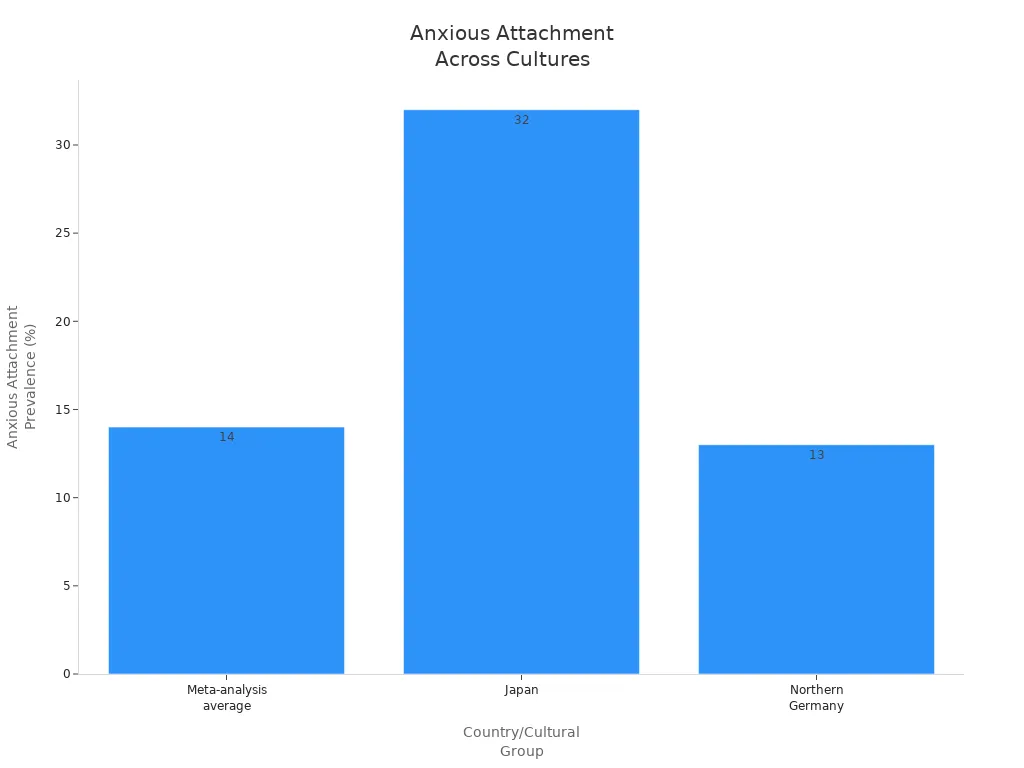
People with anxious attachment have certain traits. They feel strong emotions and want to be close to others.
Note: Anxious attachment is not a bad thing. It is a way people try to protect themselves when they feel unsure about love and support.
Some common traits are:
Wanting to be close and get attention
Worrying about being left or rejected
Trouble trusting others will stay or care
Asking for approval and comfort from partners
Feeling like they do not deserve love
Researchers have looked at anxious and avoidant attachment. The table below shows how they are different:
Characteristic | Anxious Attachment Style | Avoidant Attachment Style |
|---|---|---|
Self-perception | Feel they do not deserve love; worry about being left | Think they can take care of themselves; want to be independent |
View of Others | Think others cannot be counted on | Think others are too needy or not trustworthy |
Emotional Expressiveness | Show lots of feelings; may seem clingy | Hide feelings; may seem distant |
Intimacy | Want to be very close and get approval | Do not like being too close; want space |
Response to Conflict | Fear being left; may try to please, get mad, or cling | Stay away from fights; pull back or act like nothing is wrong |
Approach to Closeness | Want to be close all the time; worry partner will leave | Feel weird about being close; want their own space |
Fear of Abandonment | Very scared of being left; need comfort | Scared of needing others; keep distance to feel safe |
Commitment Approach | Want commitment fast; may rush into relationships | Unsure about commitment; worry about losing freedom |
Trust Issues | Hard to trust partner will stay; watch for signs of leaving | Think others will leave them; trust themselves more |
Communication Style | Share feelings openly; want deep talks | Keep feelings inside; like simple, short talks |
Coping Mechanisms | Ask for comfort; may act clingy or possessive when stressed | Pull away or avoid talking when upset |
Caregiving Behavior | Give lots of help, even when not needed; notice partner’s needs | Have trouble with closeness; do not give much comfort; want to be independent |
Researchers say people with anxious attachment use “hyperactivating” strategies. They get more emotional and notice when others seem distant. They feel better when close to others, but worse when alone. Some may try to get attention by buying things that show off.
Anxious attachment is common and can change. It is not something you have forever. With help and new experiences, people can learn to feel more secure with others.
Signs in Relationships
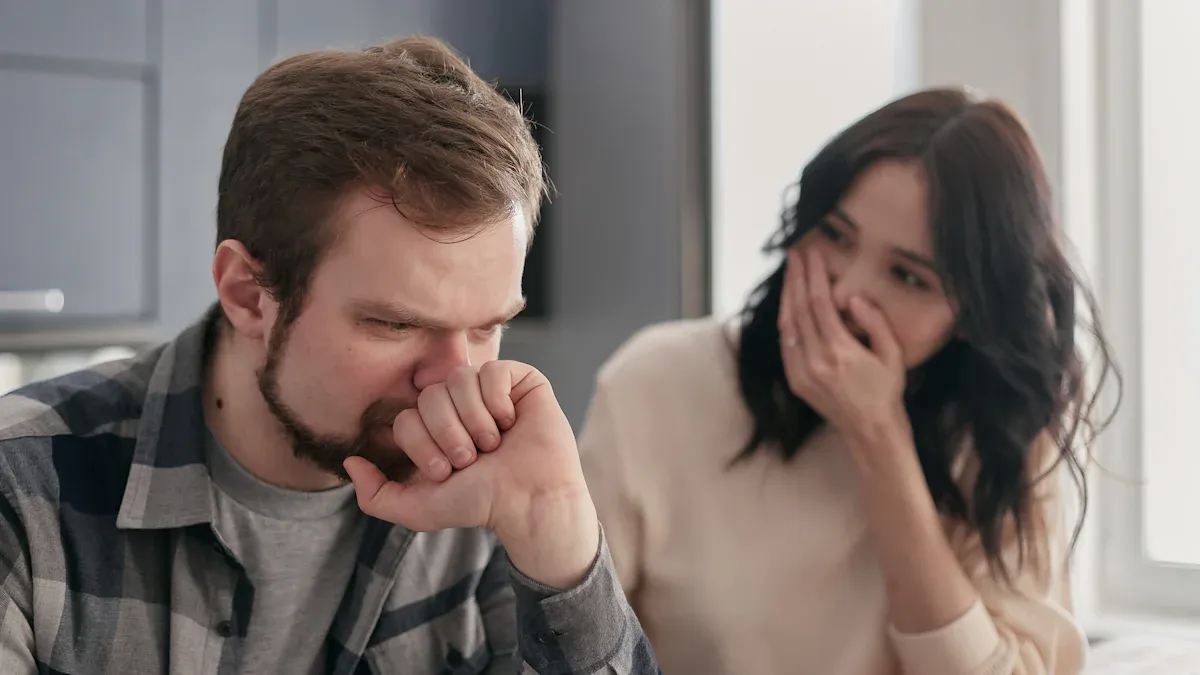
Emotional Patterns
People with anxious attachment feel strong emotions in relationships. Their feelings can change quickly and seem hard to control. They get worried or stressed if their partner acts distant. If a partner does not answer fast, they may feel upset. They want to hear that everything is okay. Sometimes, their feelings are so big that it is hard to calm down. Some common emotional patterns are:
Always feeling nervous about the relationship and scared of being alone
Having trouble saying what they need, so they might hint or pull away
Getting very emotional during fights, which can cause big reactions
Making their worries seem bigger to get their partner’s attention
Finding it hard to feel better without help from someone else
Feeling not valued or not trusting if their needs are not met
Note: These ups and downs can make relationships feel shaky and tiring for both people.
People with anxious attachment often do not feel good about themselves. They look to their partner to feel important. This can make their feelings go up and down a lot. They often need to hear that they are loved.
Behaviors
In everyday life, anxious attachment shows in certain actions. These actions can make talking and connecting harder. Experts say these people act this way because they are scared of being left and want to be close. Some common behaviors are:
Being clingy, like wanting to be with their partner all the time or sending lots of texts
Asking again and again if their partner cares or if the relationship is okay
Getting jealous or not trusting, especially if their partner seems busy
Trying to please their partner and putting their partner’s needs first to avoid fights
Thinking too much about small things their partner says or does, looking for signs of rejection
Having a hard time making healthy rules, and sometimes forgetting about their own needs
For example, someone might text their partner many times each day to check in or ask if they are loved. If their partner does not answer fast, they may feel worried or even panic. These habits can make the relationship hard and stop both people from feeling safe.
Causes
Childhood Factors
Many things in childhood affect how people connect later. Studies show kids who are ignored or treated badly have trouble trusting others. They may not feel safe as they grow up. If parents have anxiety or depression, kids may not know if comfort will come. Family fights, money problems, and stress also matter.
Kids learn about relationships from their caregivers. When parents act in ways that are hard to guess, kids get confused. They may worry about getting love and support. This can make them scared of being left out.
Long studies show kids who are ignored or hurt may have problems as adults. These problems can make it hard to trust or feel safe with others. Kids often copy how their parents handle feelings and relationships. If a parent is anxious or too protective, the child may act the same way.
Caregivers who are not steady make kids feel unsure.
Some caregivers care more about themselves than the child.
Kids may put others first and feel anxious.
Relationship Patterns
How adults act in relationships often comes from childhood. People who felt unsure as kids may worry about being left. They may need to hear often that their partner cares. They can get jealous if their partner seems far away. Small things, like missing a date, can cause big feelings.
1. Fear of being left makes people worry about love. 2. They need to hear they are loved a lot. 3. They may act clingy when they feel scared. 4. They try to please others and cannot say no. 5. They watch closely for signs of rejection. 6. Jealousy and feeling unsure are hard to control.
These habits can make relationships hard. People may act in ways that push others away, even if they want to be close. Early hurts often shape how adults deal with love and trust.
Impact on Adults
Triggers
Many adults have strong feelings in relationships because of triggers. Studies show there are common things that make people feel scared or unsure. These triggers often come from early life with caregivers who acted in ways that were hard to guess. The most common triggers are:
When a partner acts in ways that change a lot, like mood swings or not paying attention.
When a partner seems far away, either in their feelings or in person.
Not getting enough love or kind words, like not hearing “I love you” or getting fewer nice comments.
Feeling left out, not listened to, or unwanted, especially after being told something bad or being rejected.
Worrying about other people, like feeling jealous or scared someone else will take their place.
Not knowing where the relationship is going or what will happen next.
Fights and being told what is wrong, which can make someone feel alone or not loved.
People who get upset by these things often notice every sign that someone might leave them. This can make their feelings go up and down a lot, and it is hard to control.
Effects on Partners
When one person feels unsure, it can make things hard for both people. Wanting to hear nice things all the time can make big changes in how both people feel. The person who needs comfort may ask a lot of questions or feel jealous. This can make both people feel tired.
The person who wants comfort may feel nervous, unsure, and worn out.
The other person may feel tired, upset, or want to pull away.
This can make both people feel more worried and less able to trust.
After a while, both people may feel less happy and argue more.
Studies show these habits can make relationships less happy and less steady. Needing someone too much and fighting a lot can make people feel less close and more upset. Some couples feel happiest at the start, but then feel less happy as time goes on. But if couples learn about these habits, they can get help and make their relationship better.
Coping and Change
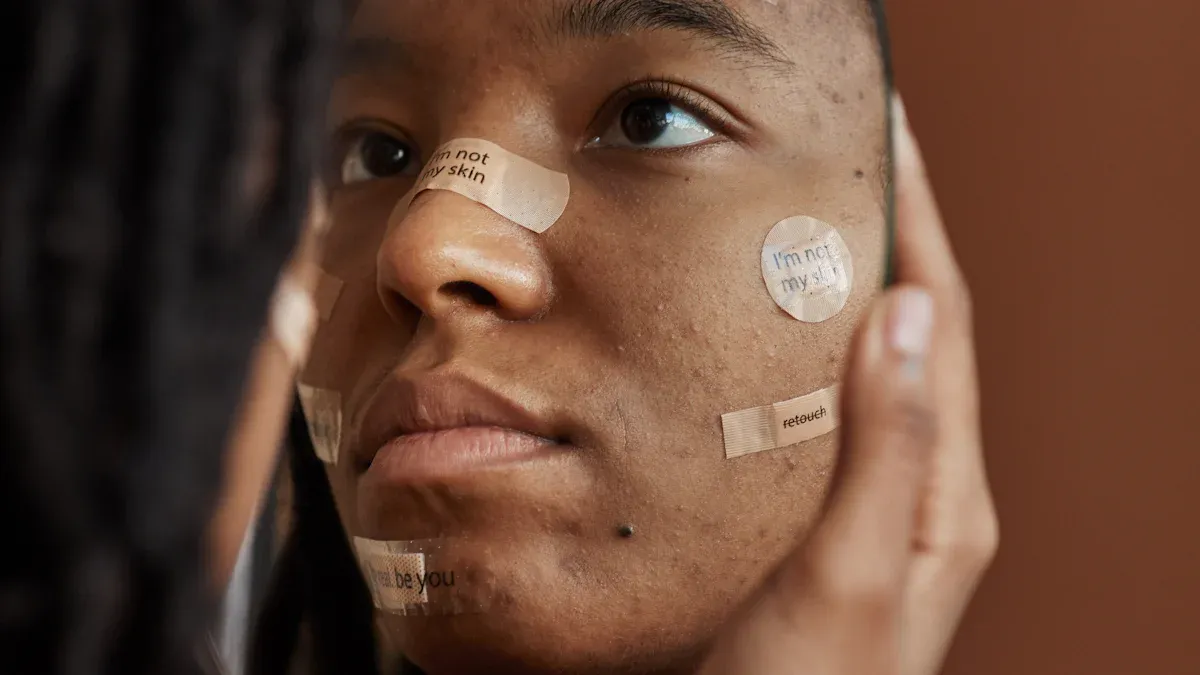
Self-Help Tips
To manage anxious attachment, start by learning about yourself. Practice new skills to help you feel better. Many people find these ideas useful:
Try mindfulness, like the “Five Ws,” to stay calm when stressed.
Notice what makes you anxious and write it down. Knowing your triggers helps you react better.
Use cognitive reframing to change negative thoughts. For example, instead of “They will leave me,” think “I can handle this feeling.”
Watch people with secure attachment. See how they deal with stress and try to do the same.
Calm yourself with deep breaths or by taking a walk when you feel strong emotions.
Build self-esteem by doing things that make you feel good about yourself.
Use self-help workbooks or guided exercises for extra support.
Mindfulness helps you control your feelings and worry less about relationships. People who use mindfulness often feel less scared of being rejected.
Communication
Good communication makes relationships stronger and stops confusion. Couples can try these tips:
Make clear rules and respect each other’s space.
Keep routines and promises to build trust.
Help each other use calming skills during fights.
Talk about relationship habits and work together to fix problems.
Being honest and clear helps both people feel safe. Partners who comfort each other and keep promises build more trust.
Getting Support
Getting help from a professional can really help people with anxious attachment. Therapists use things like Cognitive Behavioral Therapy (CBT) and attachment-based therapy. These help people see their patterns and learn new ways to act. Studies show therapy can help people feel safer and happier in relationships. Many people with anxious attachment do well in therapy and see good changes over time.
Support groups, friends, and family can also help. Having more people to talk to takes pressure off one relationship and helps people feel safer.
Knowing about attachment styles helps people see how they act in relationships. Studies say learning about yourself and talking better can help. Getting help from others also makes relationships stronger.
Therapy and good partners help people feel better about themselves. This builds trust and helps people feel safer with others over time.
Doing small things, like being mindful and making clear rules, helps people grow. Every step helps people get closer to happy and steady relationships.
FAQ
What is the difference between anxious and secure attachment?
People with anxious attachment worry about being left alone. They want to hear often that they are cared for. People with secure attachment trust others more. They feel safe in relationships. They are not scared to be by themselves.
Can anxious attachment change over time?
Yes, anxious attachment can change as people grow. New experiences and healthy relationships help people feel safer. Therapy can also help people learn to trust more.
How can someone support a partner with anxious attachment?
Be patient and listen to your partner. Use clear and kind words. Keep your promises to them. Talk openly about feelings. Support helps build trust and makes people feel safe.
Is anxious attachment a mental illness?
Anxious attachment is not a mental illness. It is a way people act in relationships. Many people have this style. With help, they can feel safer over time.
Do children outgrow anxious attachment?
Some children outgrow anxious attachment as they get older. Caregivers who give support and good experiences help. Some kids may need more help to feel safe in relationships.
